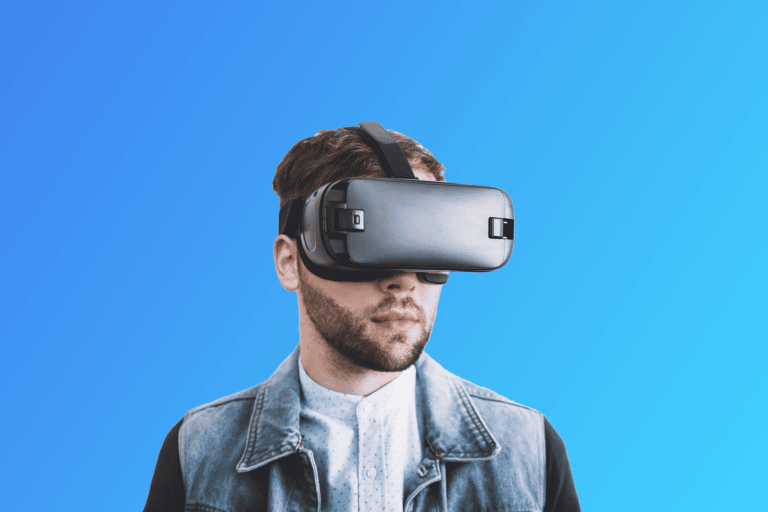The metaverse is not only a way to expand entertainment into endless new worlds, bringing together individuals from every corner of the world in unique virtual interaction. It is not only a way to facilitate accelerated learning. It also has the potential to grow to an unprecedented level economically for those smartly positioned to reap these rewards. The global augmented reality (AR) market is already very lucrative, valued at approximately $3.33 billion in 2015 and reaching $133.78 billion by the end of 2021.
Free-to-Play & Play-to-Earn
Let’s look at the metaverse use case in the rising Play-to-Earn business model of online games like Axie Infiniti. (See also Beyond Enterprizes’ in depth conversation with Luis Buenaventura.) The phenomenon of that game, especially in the Philippines, where it has gained immense popularity, is the ability its players have of using the game as a substantial source of income. It’s free to play after buying an avatar and players are rewarded to win battles against others. Especially during the COVID pandemic and lockdowns, players in the Philippines–most just teenagers– were able to earn up to $500 a month in a country where the usual median paycheck is just $200 per month. Players are rightly enthusiastic about this, especially considering they can play/earn on their phones for three or four hours a day, part-time, to surpass the wages of other full-time occupations.
In contrast, but opening up even more new possibilities, is the Free-to-Play game Fortnite by Epic Games, one of the most valuable gaming companies in the world. Not just entertainment for exploring new worlds, crafts and battles, Fortnight includes its own in-game item sales, designed to promote new items related to the game. Avatar skins, tags, gliders, emotes, and more are offered in exchange for its virtual currency, “V-bucks.” However, players of Fortnite do not actually take custody of V-bucks, unlike players of Axie Infinity who are rewarded with crypto. And unlike NFTs, these game items are in effect borrowed in the game, not owned by the players. Unlike NFTs, they can’t be moved off the platform to be resold or traded elsewhere.
This is where things get really interesting…
Meta Rebranding and NFTs
Facebook’s Mark Zuckerberg explicitly mentioned NFTs in his presentation announcing “Meta,” the rebranded umbrella company over Facebook, Instagram and WhatsApp. This is not just about new playgrounds, virtual aspects coming to Facebook and the promotion of Oculus headsets. It is about a tectonic shift that will affect the biggest advertisers in the world and their current practices of reaching consumers online.
Let’s remember that the business model of Facebook is now based on advertising by brands to consumers by using their data, preferences, friends, location and other demographics to show ads that appeal to each user on a personal level.
This business model is about to experience a huge shift as the metaverse opens up new possibilities incorporating NFTs.
New Possibilities for NFTs
Traditional business models have necessarily included intermediaries on platforms between goods/services and customers. These middlemen may be reduced and even eventually eliminated with the coming tsunami of the metaverse and its inclusion of NFTs. Opportunities for major brands as well as individuals and consumers abound. While gaining verified ownership of an item has depended on intermediaries, NFTs have now arrived to provide authentication of ownership via a digital ledger or blockchain.
Besides providing proof of ownership for an item or piece of artwork, as today’s NFTs most commonly represent, creators may attach stipulations through smart contracts to an NFT, guaranteeing a percentage of the proceeds every time an item is resold, or providing other benefits.
For example a composer of a song, the original content owner, could be paid directly for every play of their music. This model essentially disintermediates platforms like Spotify and Apple Music, as well as music publishing labels, allowing more value directly for the artist. This Direct-to-Consumer business model is not ad driven but more of a peer-to-peer system.
Let’s keep in mind the important role blockchain will play in the metaverse with security, anonymity, and the storage of data. The immutable quality of blockchain will afford security and transparency. Cryptography could provide pseudonymous participation if not pure anonymity.
The greater implications of the metaverse is how it poses a threat to behemoths like Facebook, Google and to every other technology giant whose roots are seated deeply in advertising based business models. These ubiquitous ads seen in articles and platforms have become tiresome and annoying to most readers, as demonstrated by the popularity of ad blockers.
NFTs are already changing how companies are marketing themselves, providing users with new experiences and opportunities for collecting, reigniting brand awareness. NFTs that uniquely identify the ownership of a digital object introduce the possibility of a free platform without advertising, where the platform operator generates revenues and profits, covering their costs and generating growth of the platform, through transactions between participants on the platform.
When companies create viable NFT strategies, consumers will see NFTs beyond a complex technology to embrace them on the level of mainstream adoption. In the context of an engaging setting such as the metaverse, NFTs will find their true use case, not as a passing fad, but as a viable vehicle for exchange of value.
The metaverse and NFTs have the power to transform our everyday lives, and almost every industry in the world today.




